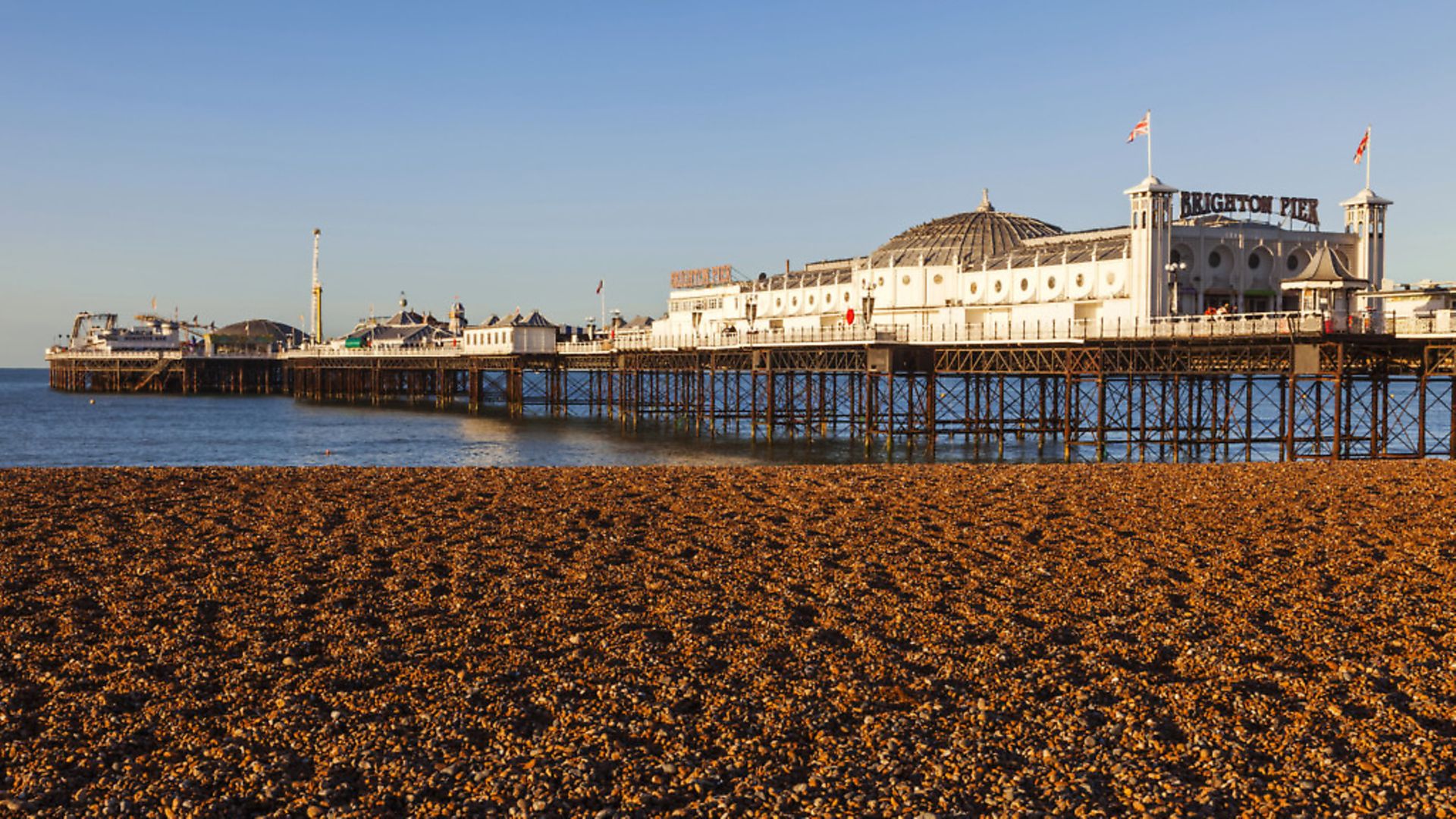
Multicultural man WILL SELF takes a trip to the seven hills of Brighton, and muses on how its two sides collide.
“You have to understand,” my father was wont to say, sweeping his great bolster of an arm through the ozone-fresh air, “the crucial similarities between Brighton… and Rome.” And when I expressed incredulity – or outright contempt – for such magniloquence, he’d follow up with: “But don’t you see: Both are built on seven hills, and both have been the epicentre of mighty empires.” I had no difficulty in accepting dad’s argument as regards Rome – but Brighton’s pivotal importance in world history seemed debatable. True, the little village of Brighthelmstone was the site where the great craze of sea bathing began, and in a few short years it had grown into the world’s first purpose-built resort town, full of bon ton; but by the early 1970s, when dad was making his wild comparisons, Brighton had itself become a victim of changing fashion.
I well remember the deserted arcades on the cavernous piers – and the sense that psychic tumbleweeds were blowing along the front, where once hundreds of thousands had promenaded. Where had they all gone to? Why, Benidorm and Torremolinos, of course. In the days of low-cost airlines and city breaks, people have long since forgotten that a life before mass foreign travel existed – but I remember it well: the dreadful sense of stasis and boredom I experienced as a child, in the lee of Brighton’s seven hills.
And I recalled all this in particular on so-called ‘Super Saturday’, because I happened to be in Brighton while parliament ‘debated’ the whys and wherefores of the latest legislation aimed at separating us from the continent – which, on an exceptionally clear day, you can just about see from the end of the Palace Pier. My grandparents lived in Brighton – and my father grew up there, which explains my familiarity with the place in the 1960s and 1970s, a time when its current incarnation as the capital of the mighty – if febrile – empire of Remain would’ve seemed altogether inconceivable, rather it – and even more so, its terminally somnolent neighbouring burgh, Hove – were veritable Elysiums, full of moribund ex-colonial servants, piddling away the remains of their days.
Walking from the station through the Lanes – a trendy little shopping district – the reasons for Brighton’s ascendancy were plain to see. Back in the day, there was Ceres, a vegetarian restaurant with stripped-pine furniture, globular white paper lampshades from the newly-opened Habitat store in Churchill Square, and – gasp – a salad bar! But now every second retail outlet is vegan, gluten-free and at once accepting of – and hard-selling to – every and any identity to which Brighton’s residents and visitors wish to subscribe. Yes, the rainbow flags were flying everywhere we looked – and this continued as we passed by the Pavilion, that fantasia on the theme of othering-Orientalism, and made our way up St James’s Street towards Kemptown.
Caroline Lucas still holds the Brighton Pavilion seat for the Greens – but they lost the Council four years ago, after what was widely viewed as an increasingly incompetent administration. But do the denizens of St James’s Street really want competence? This little quarter’s entire shtick is to be raffish and dandiacal, yet also deeply sensitive and concerned – the shops have puntastic names such as MacDoner’s and Wheat Dreams Are Made of This. A dedicated follower of fashion can process from frothy-coffee-shop to flea market to farmer’s one in a few short paces, all the while cosily arm-in-arm with anyone they please, regardless of orientation or biologically determined sex. There’s even a bar on St James’s Street called the Butler, named after Judith Butler, the doyenne of gender performativity – and right alongside it a gardening shop called Silent Spring.
What, I suspect, few of the street’s liberal strollers pay that much attention to, are the destination boards of the No.1 buses that ply this route, which read, “Whitehawk”, an estate on the down land surrounding Brighton that’s a byword for poverty and all its associated ills. I met one of the denizens in a pub near the Royal Sussex Hospital – and he looked as if he’d both put a fair few people in there, and was in need of serious treatment himself. Raffish, in three-quarter length Crombie and jeans, he was accompanied by a dribbling Staffie with a typically sharkish permanent grin.
“Me,” the Whitehawk man said, pounding his chest “I’m Roma, see, and we have our own way of sorting things out…” The barman nervously wiped another glass – clearly, he’d seen such sorting in his time: “…but we ‘preciate wise words – strong words. You lot ‘preciate strong words..?” The Roma’s glassy eyes slithered around the bar – and its sparse clientele, myself included, fixated on our glasses. Of course, being my father’s son (dad was a political scientist), I wanted to ask the man how he’d voted in the 2016 referendum, but also what it was like living on one of those seven significant hilltops.









